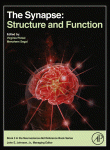

Most ebook files are in PDF format, so you can easily read them using various software such as Foxit Reader or directly on the Google Chrome browser.
Some ebook files are released by publishers in other formats such as .awz, .mobi, .epub, .fb2, etc. You may need to install specific software to read these formats on mobile/PC, such as Calibre.
Please read the tutorial at this link: https://ebookbell.com/faq
We offer FREE conversion to the popular formats you request; however, this may take some time. Therefore, right after payment, please email us, and we will try to provide the service as quickly as possible.
For some exceptional file formats or broken links (if any), please refrain from opening any disputes. Instead, email us first, and we will try to assist within a maximum of 6 hours.
EbookBell Team

4.0
26 reviewsThe Synapse summarizes recent advances in cellular and molecular mechanisms of synaptic transmission and provides new insights into neuronal plasticity and the cellular basis of neurological diseases.
Part 1 provides an in-depth look at structural differences and distribution of various pre- and post-synaptic proteins found at glutamatergic synapses.
Part 2 is dedicated to dendritic spines and their associated perisynaptic glia, which together constitute the tripartite synapse. The spines are portrayed as major sites for calcium sequestration and local protein synthesis.
Part 3 highlights the important regional and cellular differences between glutamatergic transmission and that of neurotransmitters such as dopamine and acetylcholine that are commonly found in axon terminals without synaptic membrane specializations.
Part 4 provides an overview of the synapse from the time of formation to degeneration under the powerful influence of aging or hormonal decline that leads to severe deficits in cognitive function.
Each chapter is illustrated with drawings and images derived from calcium imaging, electron microscopic immunolabeling, or electrophysiology. This book is a valuable reference for neuroscientists and clinical neurologists in both research and clinical settings.